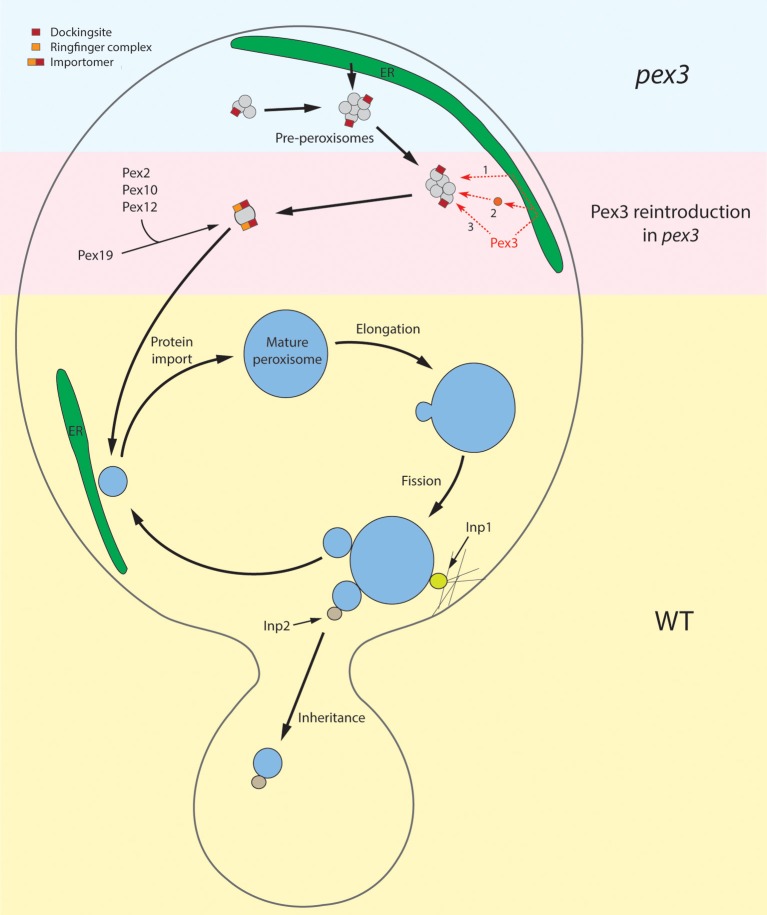Figure 2.
Schematic overview of peroxisome re-introduction in pex3 and peroxisome proliferation in WT cells. The upper part of the cell represents the situation in pex3 cells. These cells contain vesicular structures that harbor Pex13 and Pex14, proteins of the receptor docking site. How these proteins are sorted to these membranes is unknown. These structures may derive by proliferation of pre-existing ones or be formed from the ER. The pre-peroxisomes are the target for re-introduced Pex3, which may reach these structures via the ER (1), upon incorporation in vesicles that derive from the ER and subsequently fuse with pre-peroxisomes (2) or sort directly to them (3). With the presence of Pex3 at the pre-peroxisome, other PMPs can subsequently be taken up via the Pex3/Pex19 machinery. These include the ring finger proteins Pex2, Pex10, and Pex12, leading to the formation of a functional importomer. This allows uptake of matrix proteins resulting in organelle maturation and subsequent multiplication by fission as depicted in the lower half of the picture (WT situation). During growth the organelle is invariably closely associated with strands of ER. During cell fission Inp1 is essential to dock the mother organelle to the cortex whereas Inp2 determines the delivery of newly formed organelles to the bud.

